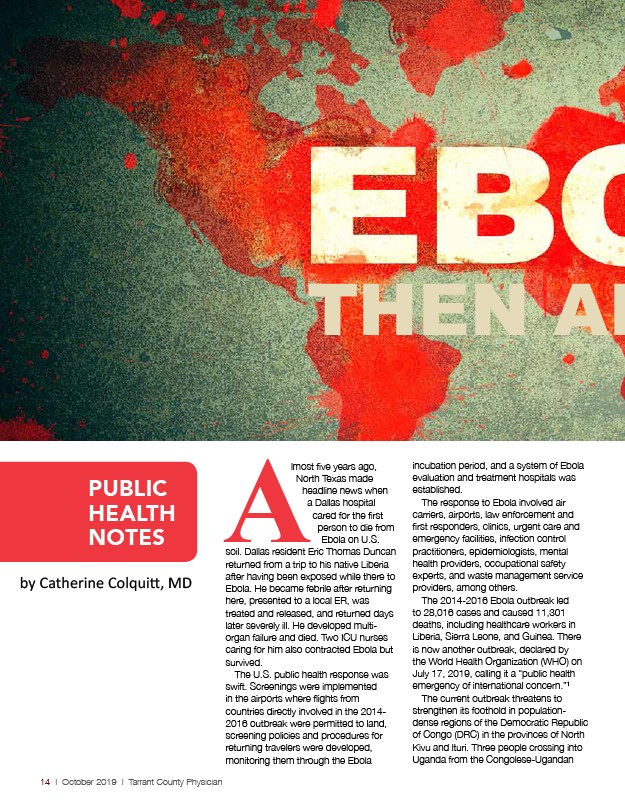
THEN AND PUBLIC
HEALTH
NOTES
14 I October 2019 I Tarrant County Physician
lmost five years ago,
North Texas made
headline news when
a Dallas hospital
cared for the first
person to die from
Ebola on U.S.
soil. Dallas resident Eric Thomas Duncan
returned from a trip to his native Liberia
after having been exposed while there to
Ebola. He became febrile after returning
here, presented to a local ER, was
treated and released, and returned days
later severely ill. He developed multiorgan
failure and died. Two ICU nurses
caring for him also contracted Ebola but
survived.
The U.S. public health response was
swift. Screenings were implemented
in the airports where flights from
countries directly involved in the 2014-
2016 outbreak were permitted to land,
screening policies and procedures for
returning travelers were developed,
monitoring them through the Ebola
incubation period, and a system of Ebola
evaluation and treatment hospitals was
established.
The response to Ebola involved air
carriers, airports, law enforcement and
first responders, clinics, urgent care and
emergency facilities, infection control
practitioners, epidemiologists, mental
health providers, occupational safety
experts, and waste management service
providers, among others.
The 2014-2016 Ebola outbreak led
to 28,016 cases and caused 11,301
deaths, including healthcare workers in
Liberia, Sierra Leone, and Guinea. There
is now another outbreak, declared by
the World Health Organization (WHO) on
July 17, 2019, calling it a "public health
emergency of international concern.”1
The current outbreak threatens to
strengthen its foothold in populationdense
regions of the Democratic Republic
of Congo (DRC) in the provinces of North
Kivu and lturi. Three people crossing into
Uganda from the Congolese-Ugandan
A
by Catherine Colquitt, MD